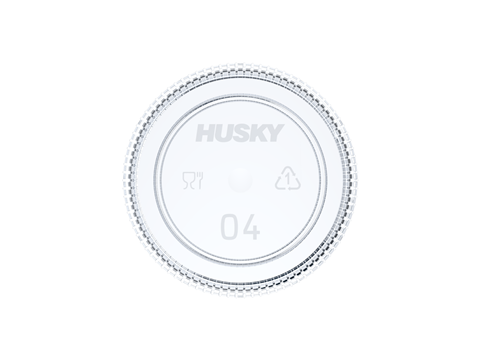
As part of our Finalist Interview series ahead of the Sustainability Awards, we spoke to Husky Technologies about its PET closure for still water, said to be fully compatible with existing PET recycling streams and nominated in the Pre-Commercialized Driving the Circular Economy category.
You’re a finalist in the Sustainability Awards 2024. Congratulations! To start off, could you summarize your entry, in less than 50 words?
Husky’s entry is focused on the development/commercialization of the PET closure. This product enables true circularity in the beverage packaging space. As the closure and bottle can now share the same material grade, a mono-material package with infinite recycling possibilities is now achievable.
Why do you think the judges were impressed with your entry? Tell us about what is innovative about your project and/or about its impact on packaging sustainability.
Husky’s PET closure is an example of a truly disruptive innovation that further improves plastic packaging’s position as the most, circular and sustainable option. Husky’s entry is an innovative disruption in enabling mono-material beverage packages, lightweighting opportunities and tamper evidence.
Until now, the plastic beverage packaging industry has relied primarily on a two-material solution for beverage packaging – bottle (PET) and closure (HDPE or PP).
Generally, PET recycling streams are known and well established. PET is the most widely and commonly recycled plastic in the world, according to the UN Environment Programme’s ‘Baseline report on plastic waste’ in 2020. Its material properties can endure countless recycling and re-processing iterations without losing its mechanical and chemical properties. Its strength and lightweighting capabilities make it ideal for bottle applications.
While both HDPE and PP can be recycled, their widespread use beyond food contact applications require that these be downcycled into other non-food contact products like outdoor furniture, pails, and children’s toys. There is insufficient availability at the scale required to support the beverage packaging industry.
A two-material approach requires additional efforts in sortation and reduces rPET bale yield. Pursuing a mono-material approach where the closure is manufactured from the same material as the bottle addresses previously identified deficiencies. Husky’s PET closure product is a pathway towards improving the sustainability and circularity of the entire beverage package, as recycling efforts are simplified and the required infrastructure is in place.

The rigid material properties of PET enable further lightweighting at the dispensing system level (neck and closure). For example, the closure thread is significantly more rigid in relation to HDPE. This improves strip torque performance and requires less thread engagement.
By reducing the thread engagement, you can reduce the height of both the neck and closure. This reduced height translates into meaningful weight savings when comparing a mono-material versus dual-material package.
The tamper evident band design lends itself to an improved level of application that imposes little to no stress on the bridges during the capping process. This improves reject rate performance, creating less waste during the production process.
The opening experience is unmatched by any beverage closure solution currently on the market. The bridge break is distinctly audible and virtually simultaneous for all the bridges, and the tactile response during bridge break is unmistakable. The visual cue of the dropped TE band is obvious.
Finally, can you tell us about the ongoing development of your project, e.g. how your innovation/initiative has been received by industry, or what are the next steps in commercialization/product development?
Husky’s PET closure solution was unveiled at the 2024 National Plastics Exposition (NPE) in Orlando Florida in May. Industry feedback has been overwhelmingly positive as brands and converters recognize the sustainability, security, and aesthetic benefits that a PET closure offers.
Husky is currently in the early adopter phase with multiple installations coming online in 2025 with select brands. We continue to enhance our learnings by evaluating new PET materials (vPET and rPET alike) to determine operating windows and establish performance values.
We are pursuing a phased rollout focusing first on the still water beverage segment. We will expand our scope to include more performance demanding applications (carbonated soft drink (CSD) and sensitive (JSDT)) once we have incorporated any early adopter learnings.
The winners of the Sustainability Awards 2024 will be announced at the Sustainable Packaging Summit, taking place in Amsterdam on 12-13 November. The Summit mobilizes leaders of the FMCG value chain, policymakers, NGOs, recyclers and investors to collaborate, remove barriers and identify opportunities on the road to sustainable transformation.
To learn more or register, visit: https://www.packagingsummit.earth/2024
If you liked this story, you might also enjoy:
How are the top brands progressing on packaging sustainability?
Sustainable Innovation Report 2024: Current trends and future priorities
Reuse vs. single use – which is better for the environment?
The ultimate guide to global plastic sustainability regulation












No comments yet